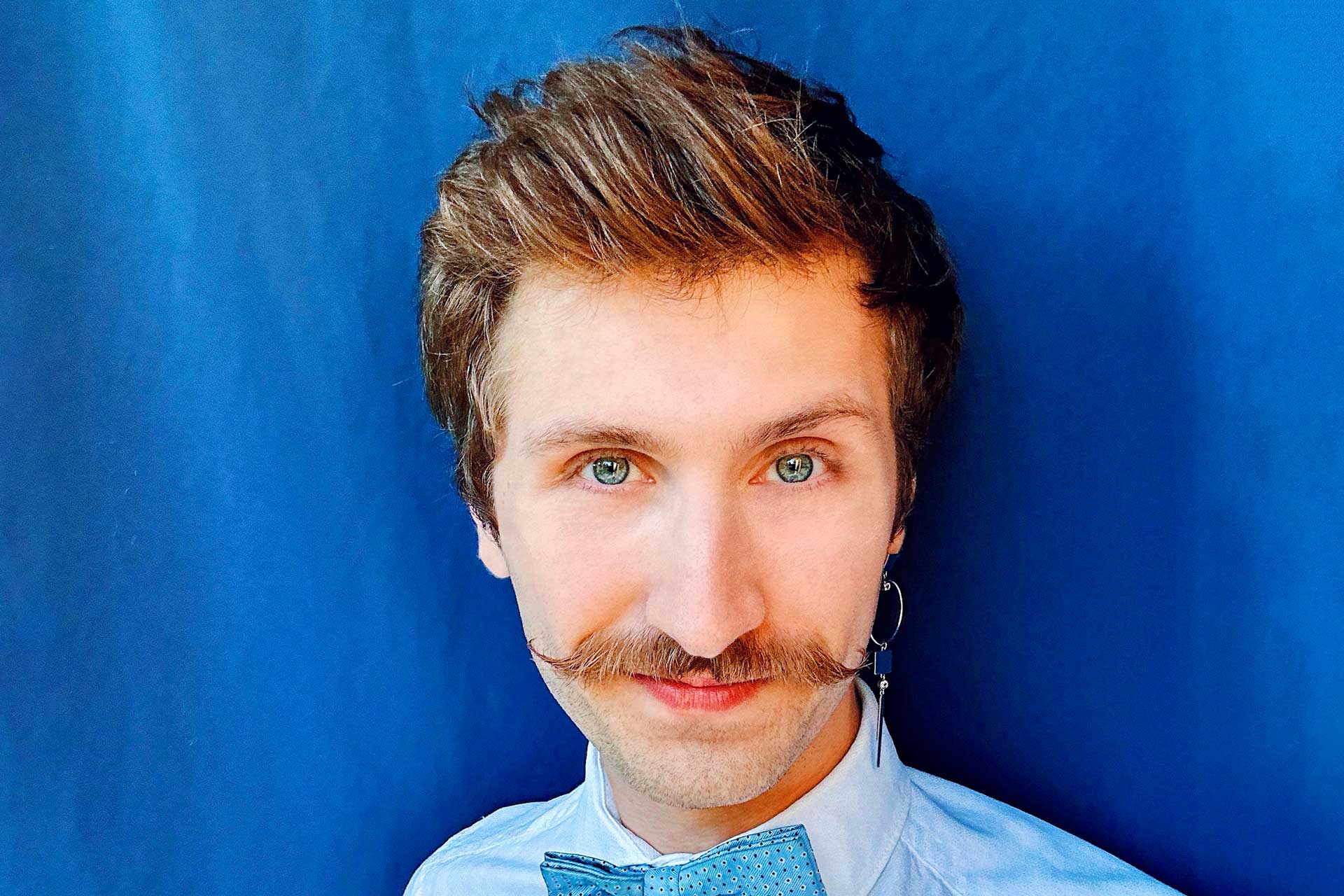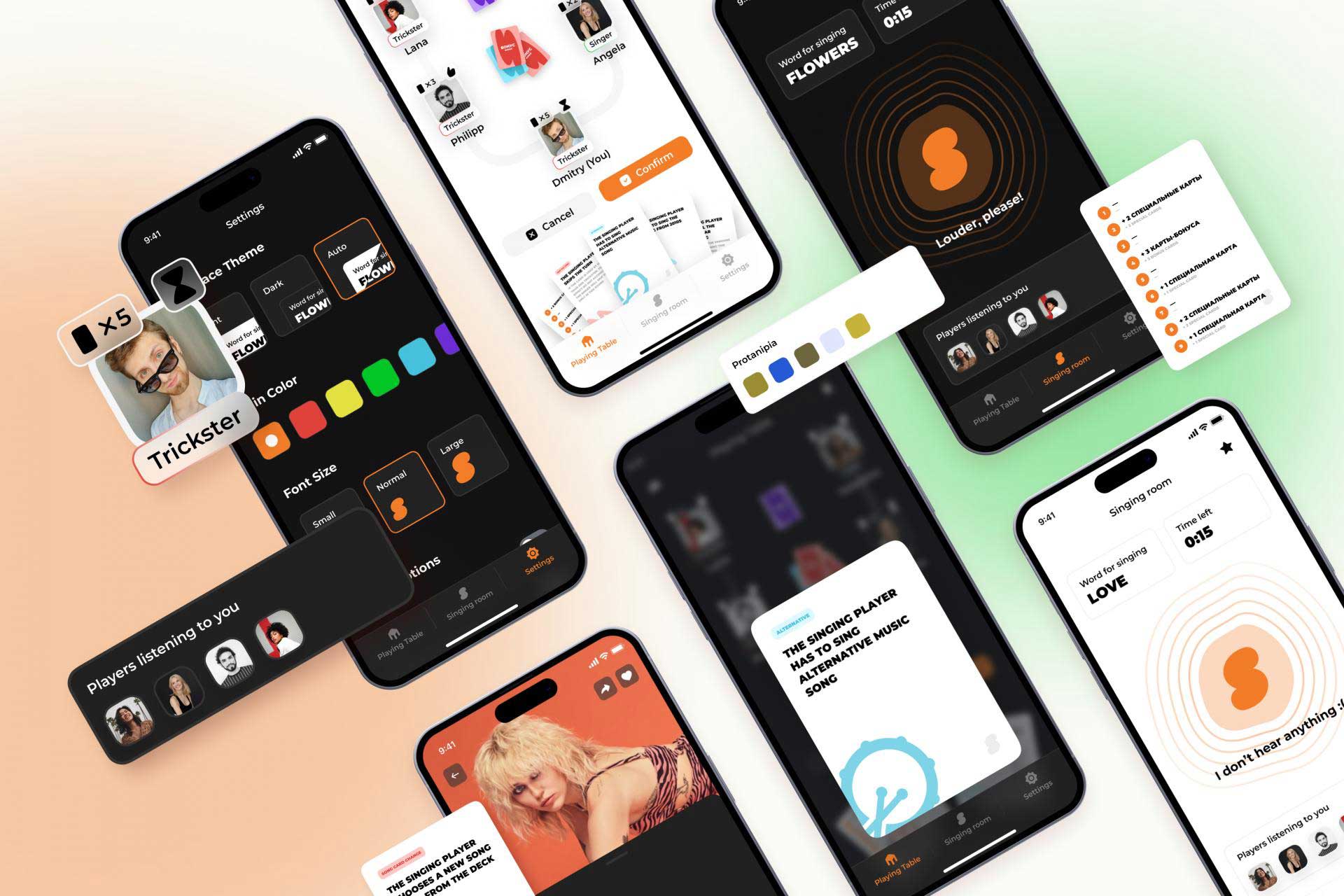Interview with Dmitry Moystsrapishvili of RBC
Dmitry Moystsrapishvili
Dmitry Moystsrapishvili's design journey began in 2017 with motion design, transitioning later to graphic design. Today, he proudly holds the position of Product Lead Designer at the esteemed international media holding company, RBC and this path has involved pivotal choices that shaped his career.
Interview with the 2023 Vega Digital Awards Winner -
Dmitry Moystsrapishvili
Greetings, I'm Dmitry. My design journey commenced back in 2017, starting with motion design, and then transitioning into graphic design. Today, I'm proud to hold the role of a Product Lead Designer at the esteemed international media holding company, RBC. This path has been a long and arduous one, marked by a series of pivotal and sometimes challenging choices that have molded my career.
Fortunately, I now find myself working alongside a team of talented product designers who continually inspire and motivate me to strive for excellence within our company. The synergy within our team is a driving force behind our collective success.
In addition to my role at RBC, I've ventured into the field of design education. This year, I've taken on the role of a design lecturer. Collaborating with a team of methodologists at an online teaching platform, we've meticulously crafted a course titled "Microanimations In Interface Design." This course delves into the field of motion design, specifically focusing on the everyday microanimations that users encounter in products, including transition animations and familiar elements like the thumbs-up animation seen in platforms like YouTube Shorts.
This foray into education enables me to impart my knowledge to budding designers, fostering their growth and understanding in this dynamic field. It's an exciting chapter in my journey, and I'm eager to continue this path of learning and sharing.
I've found inspiration in the captivating visuals that saturate our daily lives through applications, web interfaces, films, animations, devices, and navigational systems. The constant exposure to such well-crafted design has fueled my desire to be a part of the community of professionals who craft these visually appealing and functional experiences for people across the globe.
Being enveloped in the world of design has affirmed my passion to contribute to the creation of cool and purposeful products that enrich the lives of users worldwide.
In my role as a Lead Product Designer, I manage processes within the product team. This includes robust communication with stakeholders, the development and maintenance of a comprehensive Design System, and a dedicated effort to enhance the product design culture within our company. Additionally, I take on the responsibility of overseeing the launch of brand new products, ensuring their successful introduction into our company's portfolio.
In my capacity as a design lecturer, my duties encompass meticulously preparing webinars, lectures, and engaging team or individual exercises for students. I diligently review and provide constructive feedback on students' homework, with the goal of refining and enhancing their design capabilities. This dual role allows me to not only contribute to the growth and improvement of our own products but also to nurture the next generation of talented designers through education and mentorship.
My design philosophy revolves around a user-centric approach. I have a profound appreciation for design that places users at its core, where their needs, experiences, and satisfaction take precedence. This approach involves a deep understanding of the target audience, empathizing with their challenges and desires, and crafting solutions that not only meet but exceed their expectations.
It's the type of design that not only delights users but also makes their interactions more seamless, enjoyable, and meaningful. The user's journey is a tapestry of experiences, and my favorite kind of digital design is one that weaves this tapestry with care, consideration, and a commitment to enhancing their lives through thoughtful and intuitive design.
Good design is always both functional and emotionally engaging. It should help users accomplish their tasks effectively while also creating a positive emotional connection. Let's break down the two key aspects I've mentioned:
A) Functional Design:
Functional design is about creating products, systems, or interfaces that serve their intended purpose effectively and efficiently. It prioritizes usability, practicality, and user-friendliness. A well-designed object or system should make it easy for users to achieve their goals, whether that's using a tool, navigating a website, or interacting with a product.
B) Emotional Design:
It considers the user's emotional responses and feelings when interacting with a product, service, or environment. It goes beyond pure functionality to create a connection and engage the user on an emotional level. This emotional engagement can lead to brand loyalty, customer satisfaction, and user retention.
I constantly aim to create designs that are vibrant and unforgettable. However, the challenge lies in maintaining clarity and usability while infusing a strong visual impact. It demands careful consideration and restraint to strike the right balance between a striking design and user-friendliness.
Balancing clarity and usability with the pursuit of memorability is an ongoing endeavor. It involves thoughtfully selecting color palettes, typography, and layout to make your design shine without overwhelming users. Through careful testing and refinement, you can ensure that your design is both a memorable experience and a user-friendly one, leaving a lasting positive impression.
My process for product design and development is based on user-centric design and well-structured. Here's a breakdown of my approach:
A) Understanding User Problems:
I start by gathering insights into the problem users face, including current product metrics and user pain points. If necessary, I conduct UX research, which often involves problem interviews with users. This initial understanding sets the stage for finding a solution.
B) Competitor Analysis:
I analyze both direct and indirect competitors to gain a comprehensive view of the existing landscape. This helps in shaping my design and solution strategy.
C) Wire-framing and Prototyping:
With a clear understanding of the problem and competitive landscape, I create wireframes to outline the structure of the solution. These wireframes then evolve into interactive prototypes, often using tools like Figma. When needed, I even create detailed animations in Figma or After Effects, that I may convert to Json and later hand over to developers.
D) User-Testing:
User testing is a crucial step in my process. I use prototypes to conduct UX tests with users. Feedback from these tests helps refine the user flow, and any necessary adjustments are made based on the results. To consider the user preferences, I prepare designs for both Dark and Light modes. Thanks to variables in Figma, now it’s very easy to handle.
E) Handover to Developers:
Once the design is refined and approved, I prepare the designs to developers, ensuring that iOS and Android devices are covered. The comments in Figma provide clear guidance for implementation.
G) Launch and Iteration:
Finally, I launch the changes, but my process doesn't end there. I emphasize the importance of continuous improvement and working on the next interaction of the product, which is a vital part of the iterative design process.
In my creative journey, I've discovered that inspiration knows no bounds; it's a ubiquitous force that permeates all aspects of life. I find it in the harmonious melodies of music, in the tantalizing previews of movie trailers that stir my imagination, and even in the artful allure of captivating banners that adorn our digital landscape.
But beyond these readily accessible sources, my explorations across the globe have unearthed a deeper well of creativity. Traveling to different countries, I immerse myself in their unique cultural nuances, absorbing the vivid tapestry of traditions, art, and ways of life that each destination offers. This mosaic of influences from near and far serves as a boundless reservoir from which I continually draw my wellspring of inspiration, infusing it into my creative pursuits.
Over the past year, my colleagues and I have poured our efforts into developing a music streaming platform that we're immensely proud of. We initiated a comprehensive App redesign, successfully introduced car support for in-vehicle entertainment, and launched a Web version of our product to broaden our user base. Our journey has been one of continuous improvement, with a steadfast commitment to delivering an exceptional music streaming experience. We look forward to more accomplishments in the future.
Demonstrating our accomplishments and sharing our progress with audience has been a priority for our team. It's not just a matter of showcasing what we've achieved; it's about reaching a diverse and extensive audience and making an impact that extends far beyond our immediate surroundings.
Our most significant challenge revolved around the complete reimagining of our product's design, particularly the transformation of the user interface (UI) into a more contemporary and visually engaging experience.
Simultaneously, we endeavored to enhance the user experience (UX), making it more user-friendly and intuitive. This task was not merely a technical overhaul but a creative and strategic endeavor to revitalize and align our product with modern design standards and user expectations.
First and foremost, my role as a digital specialist provides me with a unique opportunity to directly influence and improve the tools and experiences that people use in their everyday lives. It's a gratifying experience to know that the work I do can have a meaningful impact on enhancing user experiences and making tasks more efficient and enjoyable.
Secondly, the digital industry is a dynamic and ever-evolving field. This constant state of change allows me to continuously explore and learn about cutting-edge technologies, trends, and innovations. Staying up-to-date in the digital realm is not only professionally enriching but also personally satisfying, as it keeps me connected to the pulse of the modern world.
Thirdly, the digital landscape fosters a collaborative and innovative environment where creative solutions are encouraged. This culture of creativity and problem-solving fuels my passion for what I do, making each day a new opportunity to explore, learn, and contribute to the evolving digital landscape.
Navigating the challenges that arise during the learning process can be quite demanding, especially when external pressures mount. However, it's crucial to remember that persistence and resilience are key. Despite the hurdles, pushing forward and refusing to give up is the path to attaining superior outcomes.
The pressure, though often taxing, can serve as a catalyst for growth and personal development. When we stay committed to our goals, we position ourselves for success, making the journey through the learning process all the more worthwhile.
In today's digital age, valuable information is abundantly accessible across various platforms. From educational content on YouTube to professional insights on LinkedIn, creative inspiration on Dribbble and Behance, curated content on Telegram channels, in-depth knowledge in books, and visual storytelling on Instagram, information is readily available and diverse.
These platforms have transformed the way we learn, connect, and find inspiration, making knowledge easily attainable from a multitude of sources.
Winning Entries
Music Streaming App Redesign | 2023
(read more at Vega Digital Awards)
The Board Game «Sing»
| 2023
(read more at Vega Digital Awards)
Dmitry Moystsrapishvili
Dmitry Moystsrapishvili's design journey began in 2017 with motion design, transitioning later to graphic design. Today, he proudly holds the position of Product Lead Designer at the esteemed international media holding company, RBC and this path has involved pivotal choices that shaped his career.
Read more about Dmitry Moystsrapishvili interview for the 2023 MUSE Creative Awards!





